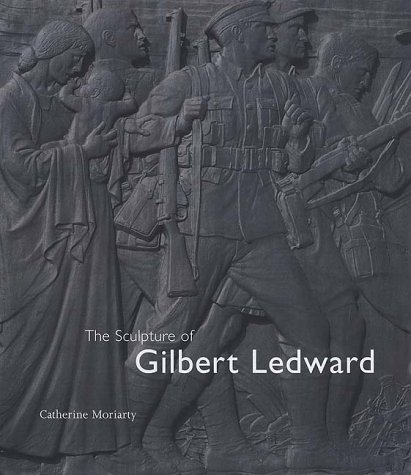The British Sculptors & Sculpture
1 total work
Trained in the conventions of the late 19th century, Gilbert Ledward (1888-1960) adhered to representational values suited to public commemorative projects. The first artist to win a scholarship in sculpture to the British School at Rome, and a soldier in World War I, he was a sought-after sculptor of war memorials. His figurative designs of those that fought remain evocative of the Great War and its cost. The Guards' Division Memorial at Horse Guards Parade (1922-5) is his most prominent work in London and he designed sculpture for the Imperial War Graves Commission Memorial to the Missing at Ploegsteert, Belgium (1926-9). During the 1930s Ledward turned from the established practice of modelling in clay to carving stone direct. While other artists pioneered the development of modern sculpture, ultimately towards abstraction, Ledward's work remained figurative. His belief that sculpture had a social purpose, both as a fine and an applied art, led to his involvement in a wide range of projects. In 1934 he co-founded the firm Sculptured Memorials and Headstones in an attempt to promote carving by regional artists in native stone.
He made architectural sculpture for many major buildings in the capital. Professor of Sculpture at the Royal College of Art, elected to the Royal Academy in 1937 and a President of the RBS, Ledward was an outspoken member of the art establishment. He was involved in debates about the place of sculpture in 20th-century society and the professional standing of the sculptor. This book examines the shift in values that Ledward found so troubling and that preoccupied him in the years after World War II. The book places attention on the processes and practice of sculpture and reproduces many sketches and working drawings previously unpublished. It is a comprehensive record of Ledward's work.
He made architectural sculpture for many major buildings in the capital. Professor of Sculpture at the Royal College of Art, elected to the Royal Academy in 1937 and a President of the RBS, Ledward was an outspoken member of the art establishment. He was involved in debates about the place of sculpture in 20th-century society and the professional standing of the sculptor. This book examines the shift in values that Ledward found so troubling and that preoccupied him in the years after World War II. The book places attention on the processes and practice of sculpture and reproduces many sketches and working drawings previously unpublished. It is a comprehensive record of Ledward's work.
